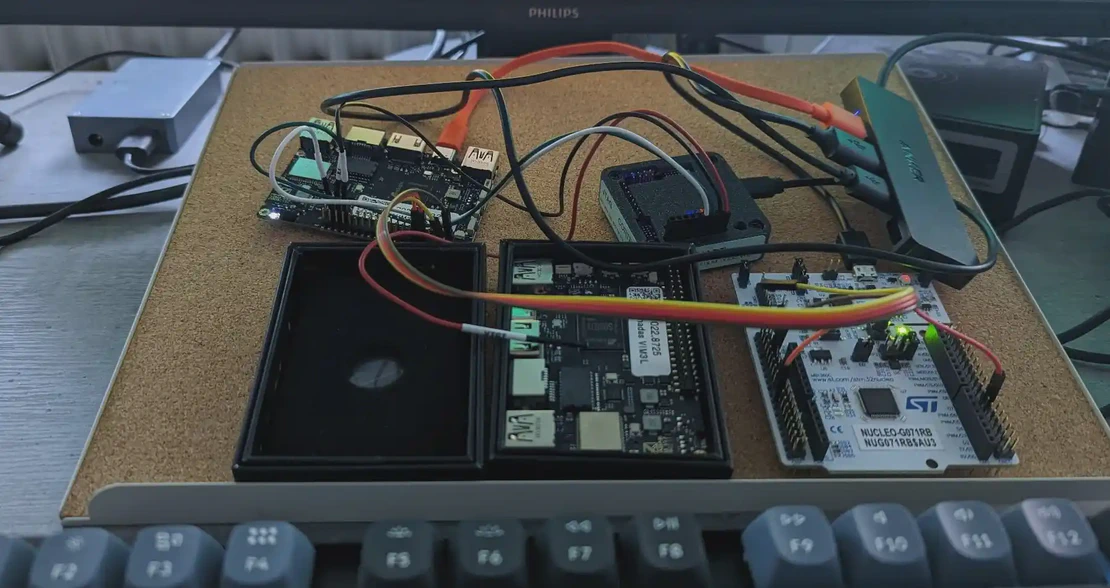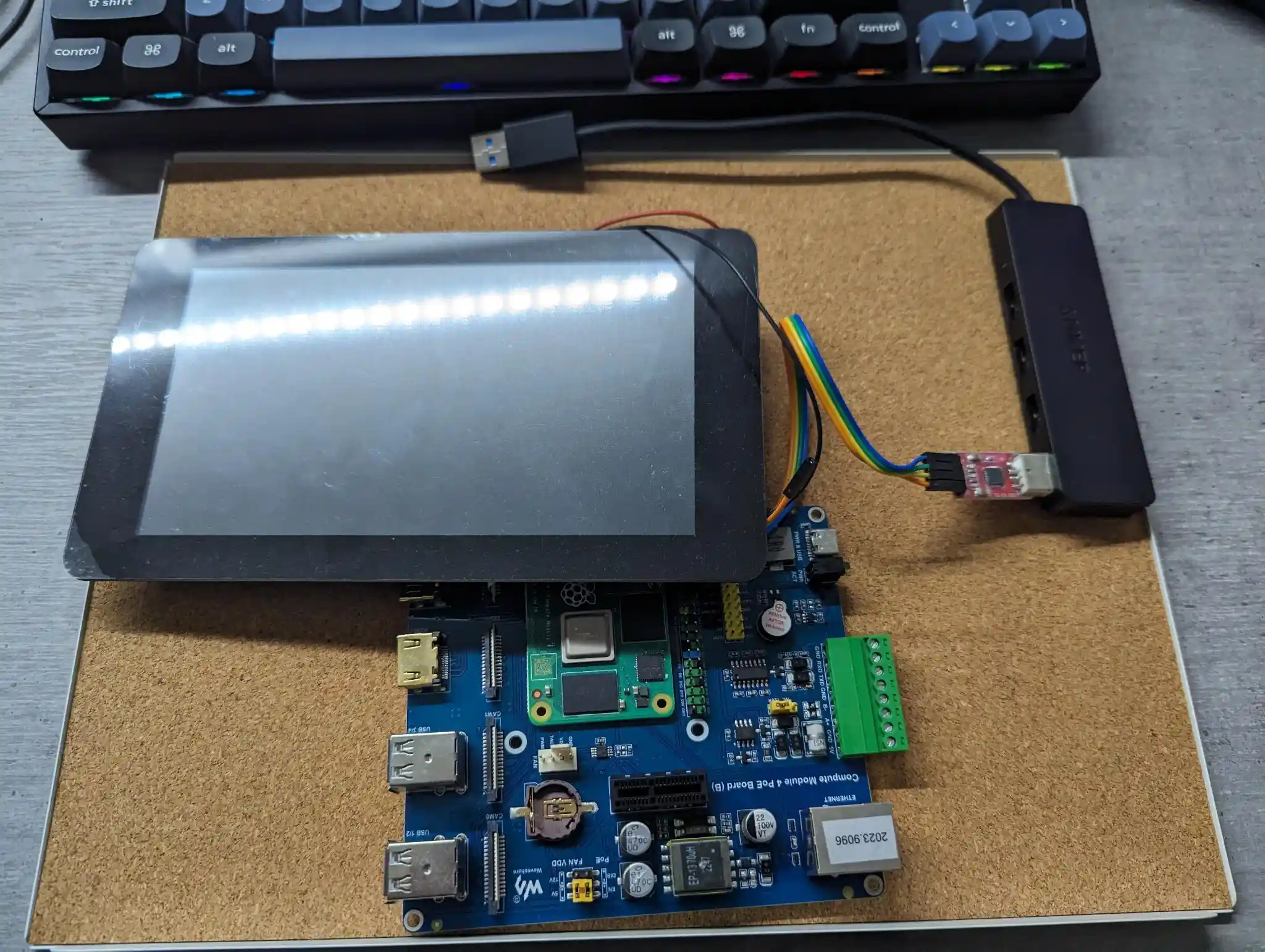
Organizing My Desk as an Embedded Engineer
- Anna-Lena Marx
- Embedded
- August 9, 2023
Table of Contents
As an embedded dev, my desk is always a mess (and I think the ones of my colleagues, too). Working with real hardware leads straight to a number of boards, additional debuggers, tools, cables and more. And of course, as the most developers, I have a number of work projects and another of private ones. Even worse, I’m working from home for a good share of my time, so both kinds contribute to the mess there. Managing this is a constant effort and fight, but rarely successful.
The Idea
Some time ago, I saw an interesting approach to handle the hardware project mess in Jay Carlson’s Blog on his home office setup for embedded projects. I liked his idea of using lunch trays and a matching rack a lot, as it helps from my point of view with several pain points:
- one project per tray
- no need to disassemble the setup when switching between projects
- neatly storing projects without mess on the desk
- easy switching between projects and setups
But for me, lunch trays and the rack are a bit too large. Nevertheless, the idea stuck in my head, so I searched for alternatives and came up with the IKEA letter tray Kvissle. It’s cheap, not that large and space consuming as the lunch tray rack, but the single trays are in general, large enough for my projects. And as a plus, they have a cork inlay. Cork is antistatic, which makes it perfectly suitable for electronics.
And the Result
A cleaner, more organized desk! And less effort switching between (hardware) projects.


To Improve
Of course, there are always things to improve, to get the tray solution even more helpful. On my list are:
- better USB hubs
- getting more Tigard and Saleae test leads, USB-UART converters and similar tools, so the wiring (and inexpensive tools) can stay per tray while the expensive tools can be moved easily
- fixating boards and debuggers
On the software side, evaluating Labgrid, a library for automating embedded development and testing, is on top of my list.
In the End
I’m very happy with the tray approach. It helps me a lot to keep projects, hardware and my desk organized. Meanwhile, I got even letter trays for the office. Besides my, colleagues and especially students use them to store their projects while they are not working, so there are no desks blocked.
Related Posts

USB Updates - Challenges, Approaches and Practical Tips
- Anna-Lena Marx
- February 24, 2024
- Embedded , Conferences
Over-the-air updates have established themselves as the standard for networked devices, but the effort involved in operating the server side is not always commensurate with the benefits. In such cases, the supposedly simple and quick solution of implementing updates via USB is often chosen. But is it really always that uncomplicated? What considerations are necessary to implement USB updates effectively?
This presentation provides an insight into the challenges of USB updates and presents solutions and practical tips for successful implementation. Find out which aspects need to be considered in order to optimize USB updates and ensure a smooth process
Read Post
LoRaWAN in theory and practice: A trip through Munich
- Anna-Lena Marx
- February 24, 2024
- Embedded , Conferences
LoRaWAN (Long Range Wide Area Network) is becoming increasingly popular, thanks in part to public networks such as The Things Network, which allow users to dispense with their own gateways. LoRaWAN also promises potential in terms of range and energy efficiency. But how does the standard perform in practice?
The aim of the presentation is to shed light on the technical background and demonstrate how practicable LoRa is in the field using real tests. It will be shown how the standard behaves in urban and rural areas, how differences in height of the gateway and different antennas influence the transmission quality.
Read Post
Android Automotive OS: A short introduction into Google's AAOS
- Anna-Lena Marx
- April 2, 2024
- Embedded , Conferences
Android, or the Android Open Source Project (AOSP), is primarily known from the smartphone market. What is less well known, however, is that the AOSP also provides a good basis for embedded systems and ensures a pleasant reading experience on eReaders, for example.
Google is now increasingly pushing into the automotive sector with Android Automotive. But what exactly is Android Automotive or the Android Automotive Operating System (AAOS)? How does it differ from Android or the AOSP? And what are the advantages over classic operating systems for infotainment?
Read Post